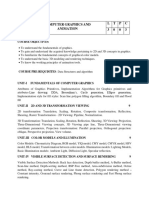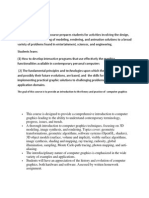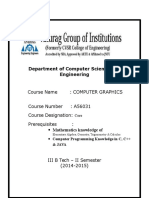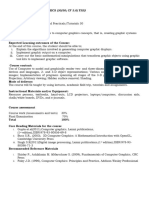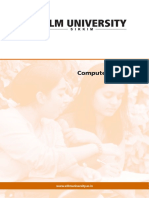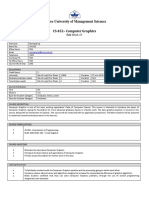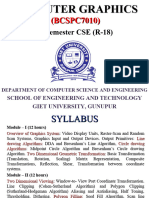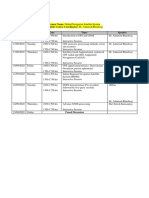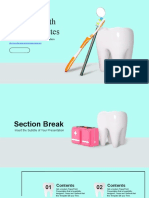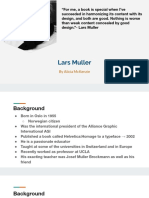0% found this document useful (0 votes)
150 views3 pagesMultimedia Systems Computer Vision
This document outlines a course on computer graphics and image processing. The course introduces basic concepts, algorithms, and applications of computer graphics and image processing. It is a core program course with prerequisites in engineering mathematics and problem solving using C. Related courses include multimedia systems and computer vision. The course outcomes cover explaining basics of computer graphics, shading algorithms, complex object models, color models, and image processing algorithms. The course content is divided into 5 units covering graphics fundamentals, shading, advanced modeling, color models and segmentation, and image reconstruction and pattern analysis. Recommended textbooks and web references are also provided.
Uploaded by
Dheeraj13Copyright
© © All Rights Reserved
We take content rights seriously. If you suspect this is your content, claim it here.
Available Formats
Download as DOCX, PDF, TXT or read online on Scribd
0% found this document useful (0 votes)
150 views3 pagesMultimedia Systems Computer Vision
This document outlines a course on computer graphics and image processing. The course introduces basic concepts, algorithms, and applications of computer graphics and image processing. It is a core program course with prerequisites in engineering mathematics and problem solving using C. Related courses include multimedia systems and computer vision. The course outcomes cover explaining basics of computer graphics, shading algorithms, complex object models, color models, and image processing algorithms. The course content is divided into 5 units covering graphics fundamentals, shading, advanced modeling, color models and segmentation, and image reconstruction and pattern analysis. Recommended textbooks and web references are also provided.
Uploaded by
Dheeraj13Copyright
© © All Rights Reserved
We take content rights seriously. If you suspect this is your content, claim it here.
Available Formats
Download as DOCX, PDF, TXT or read online on Scribd
/ 3




